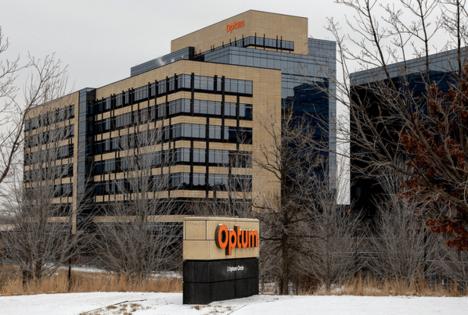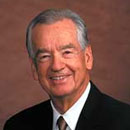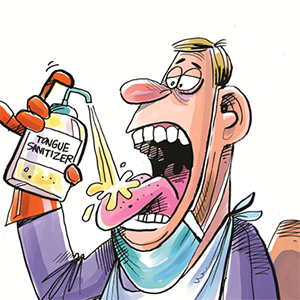Evan Ramstad: It's becoming clearer UnitedHealth Group isn't just going through a rough patch
Published in Business News
UnitedHealth Group’s incredible fall this year looks less and less like a temporary problem.
In the nearly six months since the stock of the Minnesota-based health care company crashed, it has become clearer to big investors that a fundamental change happened to it.
With the third quarter ending Tuesday, we’ll soon see new results from UnitedHealth. Yet, for as big a company as UnitedHealth is, it reveals very little about its performance.
That’s part of why investors were so surprised in April when the company announced problems. It also means investors may not be as sure when the company starts to recover.
In the past they let UnitedHealth’s relative lack of transparency slide because it consistently produced double-digit percentage gains in annual earnings per share. Now, there are voices criticizing it.
“They have a great track record, but there’s a lot of open-ended questions that none of us can figure out,” Michael Ha, analyst for the managed care industry at investment bank Baird & Co., told me last week.
“The story [of the company] doesn’t make sense in a lot of ways, and the ability to track improvement is very difficult given the lack of disclosure,” Ha said.
A new chief financial officer started at the company this month. It’s not known whether he will expand the amount of financial information UnitedHealth reveals.
In response to my inquiry about that prospect, a company spokesman said, “We strive to meet our stakeholders’ evolving needs to understand our business performance through compliant, transparent and useful disclosures.”
Top executives have been meeting with some analysts in recent weeks. Morgan Stanley earlier this month revealed its research team met with CEO Stephen Hemsley, new CFO Wayne DeVeydt and the top executives of the firm’s major business units. “We are incrementally positive following discussions,” the Morgan Stanley analysts wrote on Sept. 10.
Most businesses try to keep as much information secret as they can, of course. Big size helps because, under federal rules, companies only need to disclose deals or actions worth a portion of total assets. The bigger the company, the bigger the deal it can make without having to reveal details.
UnitedHealth’s opaqueness has long been a complaint of journalists who try to follow the company. I decided to call Ha after seeing him talk about it on a podcast and YouTube video last week with Steve Eisman, the investor who became well-known in the book and movie “The Big Short” for forecasting and profiting from the collapse of the housing market in 2008. (Actor Steve Carell played him in the movie.)
Eisman lived up to his colorful reputation while discussing UnitedHealth with Ha.
“The disclosure of this company is appalling,” Eisman said. He added that he examined UnitedHealth’s latest quarterly earnings announcement and decided it was so slim he wouldn’t buy shares.
“Where’s the rest of it?” Eisman asked. “There is no way from the data this company gives that you could really model the company. I mean you can model it, but you can’t really model it in a granular way that would let you say, ‘My model is telling me what’s happening in this company.’”
The revelation in UnitedHealth’s first-quarter results of diminished profits for 2025 triggered a punishing selloff of the company’s shares. They’re now about 43% below the level before that announcement in April.
Analysts and sophisticated investors knew last year the company would likely be hurt by the federal government’s new risk model governing its repayments to insurers for Medicare and Medicaid coverage. Previously, that model gave insurers a lot of wiggle room to assign types of illnesses or conditions for which they would be reimbursed by the government.
UnitedHealth had a reputation for “upcoding,” meaning it assigned more illnesses or conditions to get more repayment money in its large Medicare Advantage program. In July, UnitedHealth acknowledged it is cooperating with a Justice Department investigation into its Medicare practices.
Ha and other analysts this year have been trying to more precisely determine the effect on the company’s finances because of upcoding. Ha studied UnitedHealth’s practices in Los Angeles, where its Optum Health unit employs or manages via contracts 3,000 doctors, its largest concentration anywhere.
As a result, Ha turned from one of the most bullish analysts on UnitedHealth to one of the most pessimistic. His current price target for the company’s stock is $198, far below the $340 level where it’s now trading.
“We downgraded UnitedHealth Group in July because what we found in Optum Health markets, specifically Los Angeles County, is very aggressive risk coding,” he told me. There’s still another year of change coming in that government risk model, he noted.
Ha said he would like to see far more information about each of UnitedHealth’s six lines of business.
“They give us two metrics; basically it’s revenue and operating profit. It’s very challenging,” Ha said. “To build my confidence, a big part of it will be providing more disclosure.”
———
©2025 StarTribune. Visit at startribune.com. Distributed by Tribune Content Agency, LLC.












Comments